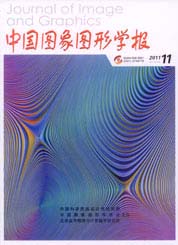
无监督学习的无线胶囊内诊镜视频分类方法
冯文刚1, 高隽1, Bill P.Buckles2, 吴克伟1(1.合肥工业大学计算机与信息学院,合肥 230009;2.北德克萨斯大学计算机科学与技术系,丹顿 76203) 摘 要
近年来在对病人的消化道系统检查中,无线胶囊内诊镜(WCE)是一种最新技术,可以让医生直接观察到病人的病灶所在,但是对于消化道系统中的口腔、胃、小肠和大肠的WCE视频分类却是难点所在。相关研究中均采用通过人工标记的训练库的有监督学习方法。为了在WCE训练数据中获得高识别率,提出一种无监督学习方法,它利用融合颜色信息的尺度不变特征转换(SIFT)获取局部特征,再利用概率隐语义分析模型(pLSA)数据训练中进行语义内容分析。实验结果表明,在WCE图像分类中本方法与当前最新的监督分类方法一样可以获得高准确率。
关键词
Wireless capsule endoscopy video classification using an unsupervised learning approach
Feng Wengang1, Gao Jun1, Bill P.Buckles2, Wu Kewei1(1.School of Computer and Information, Hefei University of Technology, Hefei 230009 China;2.Department of Computer and Science, University of North Texas, Denton 76203 USA) Abstract
Since Wireless Capsule Endoscopy (WCE) is a novel technology for recording the videos of the digestive tract of a patient,the problem of segmenting the WCE videos of the digestive tract into sub-images corresponding to the mouth,stomach,small intestine and large intestine regions is not well addressed in the literature.A few papers addressing this problem use a supervised learning approach that presumes availability of a large database of correctly labeled training samples.Considering the difficulties in procuring sizable WCE training data sets needed for achieving high classification accuracy,we introduce an unsupervised learning approach that employs Scale invariant feature transform (SIFT) with color information for extraction of local features and uses probabilistic latent semantic analysis (pLSA) model for data semantic analysis.Our results indicate that this method compares well in classification accuracy with the state-of-the-art supervised classification approach to WCE image classification.
Keywords
video classification unsupervised learning approach probabilistic latent semantic analysis (pLSA) Scale invariant feature transform (SIFT)
|



 中国图象图形学报 │ 京ICP备05080539号-4 │ 本系统由
中国图象图形学报 │ 京ICP备05080539号-4 │ 本系统由